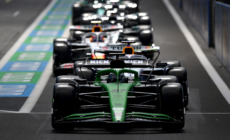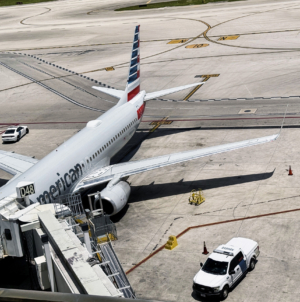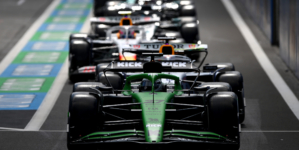-
American Airlines Passengers Evacuate Via Slides After Aborted Takeoff - 21 mins ago
-
App Touting Safe Space for Women Hit by Data Breach - 56 mins ago
-
Opinion: The Path to Peace in the Middle East (and a Nobel Prize for Trump) - about 1 hour ago
-
FIA Issue Ruling on Hülkenberg and Stroll Pit Lane Collision - 2 hours ago
-
Cadillac F1 Team Finalizes Driver Lineup for 2026 Season - 2 hours ago
-
Hunter Noack and His Piano Have Reached the Mountaintop - 2 hours ago
-
Martin Brundle Warns Mercedes F1 of Kimi Antonelli ‘Crisis’ - 3 hours ago
-
If I Don’t Post About My Vacation on Instagram, Did It Even Happen? - 3 hours ago
-
Yankees’ Aaron Judge Finally Breaks Silence Following Grim Injury Update - 3 hours ago
-
Houston’s Astrodome Was a Vision of the Future. It’s Past Its Prime. - 4 hours ago
Five Things to Know About Hajj Pilgrimage This Year
Millions of Muslims have gathered in Mecca, marking the beginning of the five-day Hajj pilgrimage—the world’s largest annual religious gathering. It is year 1446 in the Islamic calendar.
Pilgrims are expected to retrace the steps of the Prophet Muhammad, moving through the holiest sites in Saudi Arabia’s Hejaz region.
The pilgrimage starts with standing at Mount Arafat, which is the pivotal moment of Hajj, where the prophet delivered his Farewell Sermon and ends with throwing stones at the three pillars (Jamarat) in Mina, symbolizing the rejection of evil. It includes the Eid al-Adha celebration, commemorating Abraham’s (Ibrahim) willingness to sacrifice his son in obedience to God.
Over time, the pilgrimage has undergone significant changes and faced logistical, political, and safety-related challenges. Here are five things to know about Hajj:

FADEL SENNA/AFP/Getty Images
Deadly Gathering Risk
Estimated to include nearly two million pillion—with at least 1.5 million from overseas—the kingdom had to cut back on the number of accepted pilgrims. Following repeated disastrous stampede deaths, authorities have enhanced crowd management and safety measures. A stampede in 2015 killed more than 2,400 people according to the Associated Press.
Increasing Climate Danger
For years, experts have warned that climate change in Saudi Arabia could cause Hajj pilgrims to encounter extreme heat levels in coming decades. According to Saudi weather forecasts, the temperature is already at 104 F in Mecca.
Extreme heat has caused many pilgrim deaths during Hajj in recent years, with more than 1,300 reported dead last year. This year, Saudi Arabia launched a massive cooling system in Mecca’s Grand Mosque.
Advanced Technology Deployed
Infrastructure in Mecca has been significantly expanded, with multiple new levels added around the Kaaba to ease crowd flow. Also introduced were electric mobility options to assist pilgrims, although walking remains the traditional method for performing rituals.
Hajj 2025 has witnessed significant use of military equipment, artificial Intelligence (AI) and drone surveillance systems to monitor crowd movements and detect unauthorized access, ensuring real-time response to potential issues.

HAZEM BADER/AFP/Getty Images
Economic Hierarchy
Hajj reflects a distinct economic hierarchy, with wealthier pilgrims often opting for premium Hajj packages offering private tents, faster transport, and hotel proximity to the Haram, while lower-income pilgrims endure long queues, shared accommodation and basic services. This stratification is reinforced by a multi-tiered system of travel agencies and national quotas.
Geo-Religious Power
While reinforcing its role as custodian of Islam’s holiest sites, Saudi Arabia has been criticized by some Muslim nations for using Hajj as a strategic power tool—especially during political crises—projecting religious leadership and regional influence, with Iran often capitalizing on criticism of the kingdom.
Source link























